Russian LNG Transport in Pictures
Gazprom says the “quite favorable” geographic location of Russia allows it to deliver gas around the world. “The crescent Asia-Pacific market is going to turn into a major gas consumer in the forthcoming decades. Two Far East-based LNG projects – existing Sakhalin II and emerging Vladivostok LNG – will enable Gazprom to strengthen its position in the Asia-Pacific market.” The Atlantic states are expected to be covered by another Gazprom’s project – Baltic LNG.
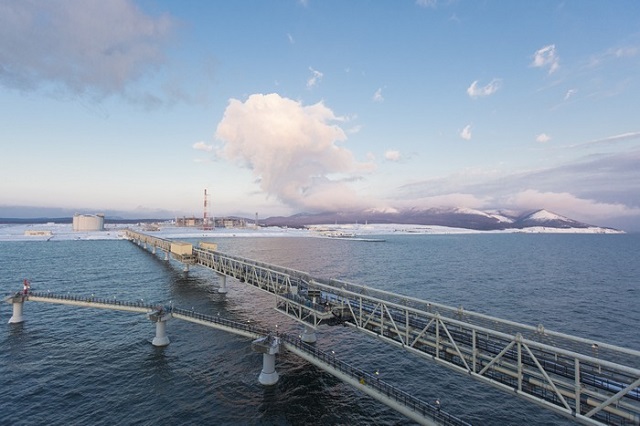
The first and still the only LNG plant in Russia is located at the Aniva Bay shore, in the southern part of the Sakhalin Island. The plant produced its first LNG in 2009. Over 900 loads of LNG (one standard load holds 65,000 tons) have since been shipped to Japan, South Korea, China, Taiwan, Thailand, India and Kuwait. The plant’s annual output exceeds 10 million tons of LNG covering over four percent of the global LNG supplies. And the figure is likely to grow – Gazprom and Shell signed the Memorandum for a third train at the LNG plant at Sakhalin II in June 2015.

The Prigorodnoye port is capable of taking gas carriers of different sizes – from the small ones of 18 thousand cubic meters capacity to the large ones such as the Ob River (in the photo) designed for nearly 150 thousand cubic meters. LNG gas is loaded into the ship’s tanks through a manifold arranged under the 800-meters-length pier.
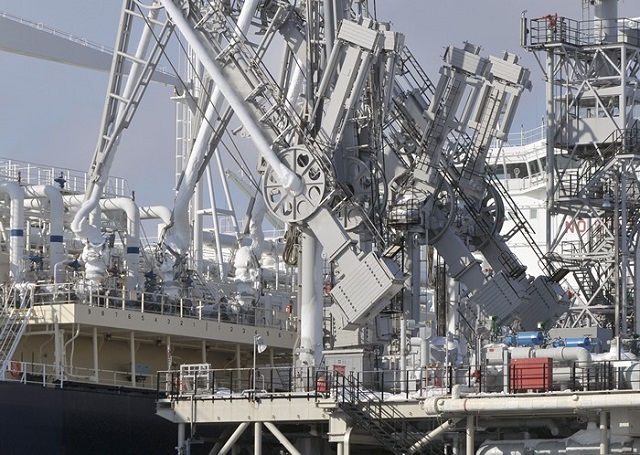
It takes 16–18 hours to fill such a vessel with LNG. The vessel is connected to the pier through special hoses called loading arms. The process is easily identifiable by the thick ice layer on the steel generated due to the difference between LNG and ambient temperatures. The hotter it is outside, the thicker the ice crust.
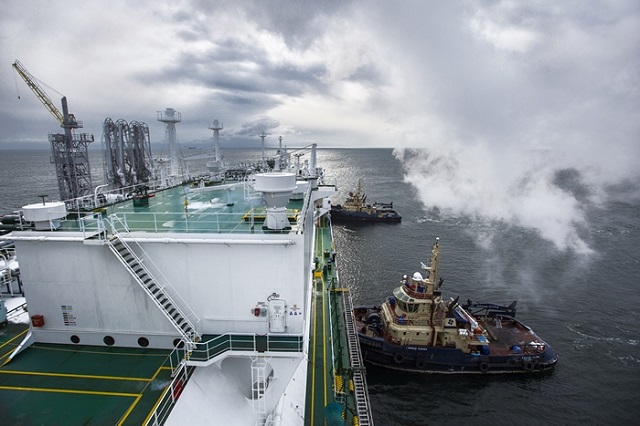
The vessel requires four tugs to get it out of the port area. They drag the vessel until it is capable of turning around to proceed independently. In winter time, the tugs are responsible for keeping access to berths free of ice.
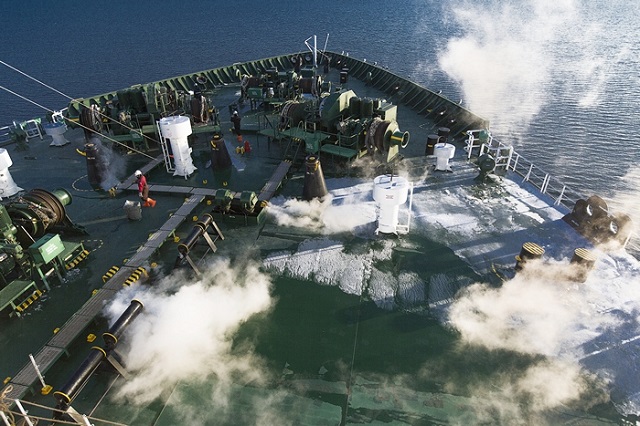
The Ob River was given its name in summer 2012 – after the signing of a freight agreement between Gazprom Marketing & Trading and Dynagas, a Greek shipping company. Previously the vessel was named the Clean Power and operated all around the world by GM&T till April 2013 (including twice passing along the Northern Sea Route). It was then chartered by Sakhalin Energy to operate in Russia’s Far East till 2018.
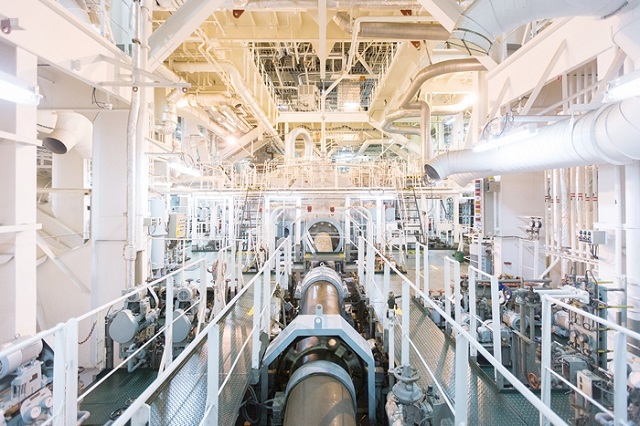
And this is the engine-room – heart of the vessel. Four decks (elevations) hold engines, diesel generators, pumps, boilers and compressors responsible, besides vessel propulsion, for all vital systems. The coordinated operation of all these units provides the crew with potable water, heat, electricity and fresh air.
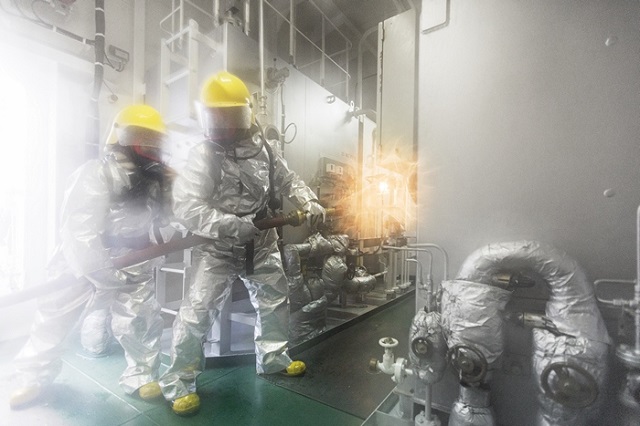
Almost daily, emergency drills put some color in routine operations. Everybody gets involved, other duties are put aside. Three emergency training exercises take place during a week. Here, the crew extinguished imaginary fire within the incinerator.
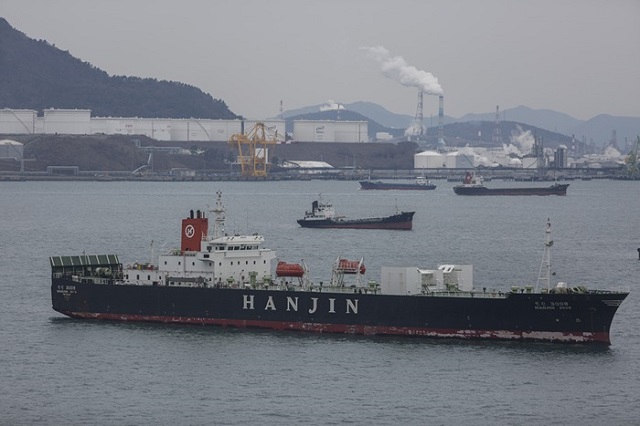
As the South Korean regasification terminal takes shape in the distance, four tugs head towards the vessel.
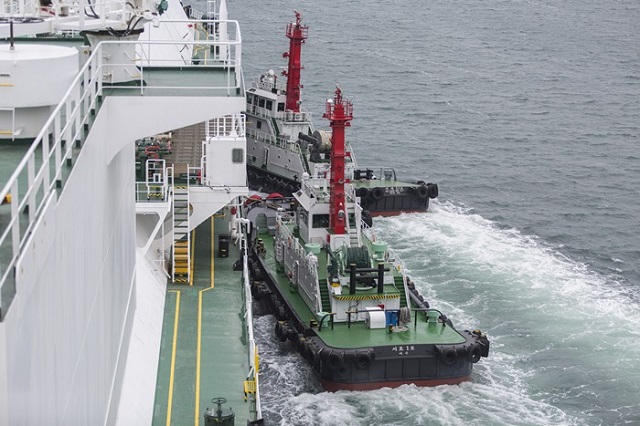
They push the vessel to the birth. Then the Ob River is connected to loading arms (same as those at the Sakhalin terminal) and LNG offloading starts. It takes as long to empty the vessel as it does to fill it.
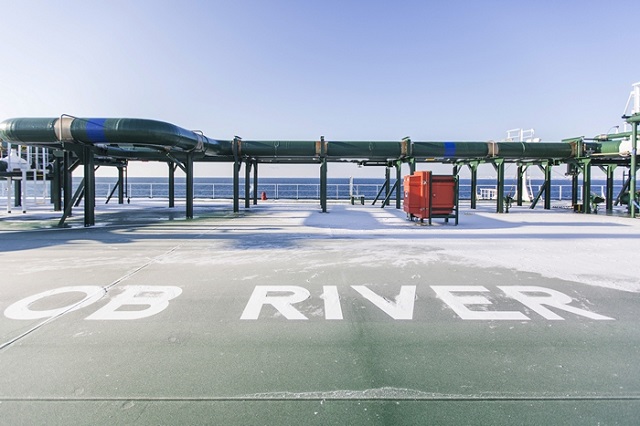
After cargo unloading, the Ob River returns to Sakhalin to take another LNG cargo. Which Asian country is next, usually becomes clear just before the vessel is loaded.
The opinions expressed herein are the author's and not necessarily those of The Maritime Executive.
